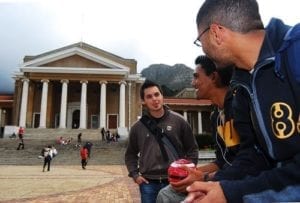 The rejuvenation of the Chartered Institute of Logistics and Transport of South Africa (CILTSA) is well underway, writes Elvin Harris.
The rejuvenation of the Chartered Institute of Logistics and Transport of South Africa (CILTSA) is well underway, writes Elvin Harris.
Our role in South Africa, as a local branch, is to take that quality training and make it available to the industry. It has become a sort of cradle-to-grave system that caters to school leavers, as well as to those already employed in the industry. It can be taken to fellowship level. New training material and techniques are always made available, so as to keep it fresh. While CILTSA launched in 2003, it hasn’t done too well in recent years, in terms of corporate membership numbers. For some or other reason, we lost a bit of ground and other players in the space got ahead. So we are at the point where we need to re-establish our position in the marketplace. The training offerings are still of a high quality and it’s a global system. The modules and courses are the same worldwide, so it is possible to be a practitioner anywhere around the world with that same qualification. There is definitely scope for CILTSA training programmes and we are now working to bring those products to market and deliver value to our members. One of the key issues is research and development, and subsequent information and knowledge sharing. We are looking at hosting a range of conferences and seminars, which will become cutting-edge information sharing platforms. We need to grow and get to the point where we can host quality, well-attended events with local and internationally renowned speakers. If you offer a quality service or a quality product of interest to your target market, it will be supported. Our job is to bring that quality and service back to our members. There is some training already taking place through SAPICS and a number of universities. In some respects, we will be competing with what’s already out there in the marketplace, but in other respects, we’re not necessarily competing because we look at the unique leg – namely transport – as our core. We have plans to add to the logistics and supply-chain spheres later on; more associated supply-chain elements will be added in, should there be appetite for that. But, first, we want to host quality events with good speakers and relevant topics.
Leverage
Starting slowly, on a small scale and prioritising quality, is key. CILTSA needs to leverage and tap into its vast international network of experts. It also has a role to play in Africa, as there are a number of CILT branches on the continent.
The first year will be about putting the necessary building blocks in place: working with the right people, and getting the right ideas and agreements in place. Next year, or eighteen months from now, these can be implemented. For us, it’s about quality over quantity. If we get things right with select service providers and institutions, graduates will enter the workforce and be competent enough to get the job done. As we do our research, we might identify more training providers that we’d like to get involved with and then we’ll engage with them. We’ll screen selected training providers and ensure they have the right infrastructure, the right expertise, and the right faculties. Actually, there’s a two-step validation process for vetting would-be training providers. We do the initial vetting and site inspections, and conduct interviews with the management team and so on. CILT International then performs a more thorough screening process. We’ll consider the years of operation, the level of experience of individual faculties, financial stability and reputation, among other factors. We don’t have our own direct mechanism for making training available. We need others to deliver the training under licence and/or agreement. It’s possible that, over time, we’ll build up a faculty and offer it as CILTSA but, at this stage, we’d prefer to leverage capability that already exists in other institutions. Carpe Diem
A few months ago, CILTSA board member John Maluleke, together with representatives from SASTALC, went to a student’s career-day event in Polokwane where he told students about the transport and logistics industries and the career paths available to them. We will attend more of these events to attract students. We realise that we need to talk to high schools and make sure that we reach the Grade 10s, 11s, and 12s. We want to start in the critical hubs of the country – Gauteng and the inland provinces. At CILTSA, we’re calling it a rebuilding phase and are setting up the platforms and embedding certain things that need to be done now. This will set us up for the expected growth. We’re also keenly aware that we need to establish the right partnerships and ensure that we provide value to our existing members.








